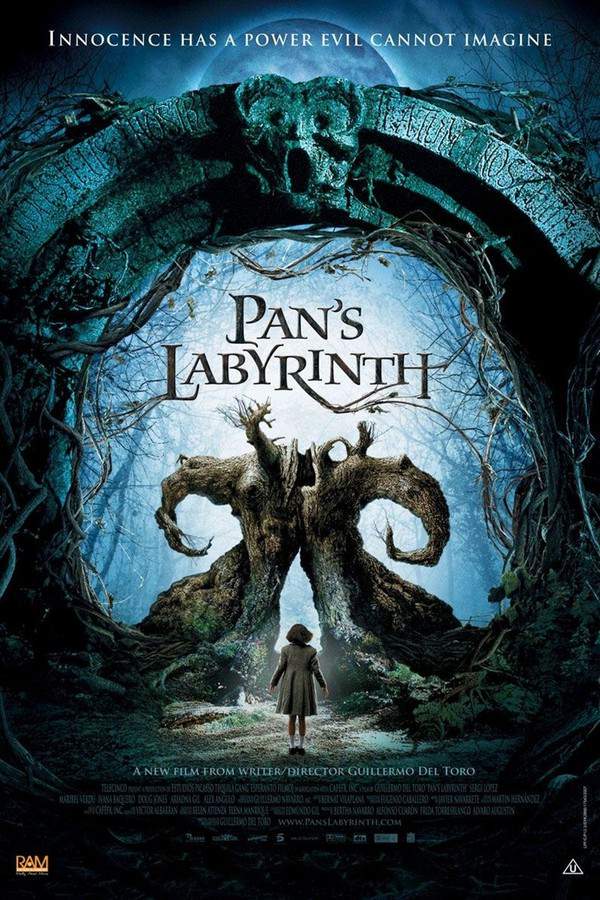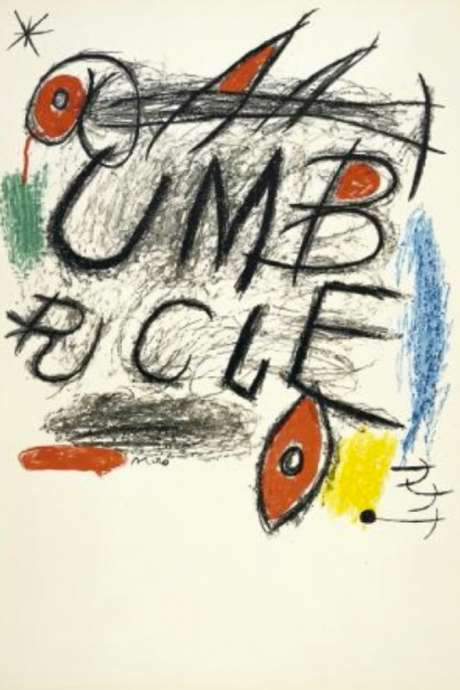Buñuel in the Labyrinth of the Turtles 2019

In 1930s Paris, following a period of scandal, filmmaker Luis Buñuel receives unexpected funding from a friend who has won the lottery. This allows him to embark on a documentary project, Las Hurdes: Land Without Bread, which takes him to the remote, impoverished mountains of Spain. The journey becomes more than just a film shoot; it's a profound exploration of mortality, the human condition, and the search for artistic truth as Buñuel observes the lives of the people he is documenting.
Does Buñuel in the Labyrinth of the Turtles have end credit scenes?
No!
Buñuel in the Labyrinth of the Turtles does not have end credit scenes. You can leave when the credits roll.
Meet the Full Cast and Actors of Buñuel in the Labyrinth of the Turtles
Explore the complete cast of Buñuel in the Labyrinth of the Turtles, including both lead and supporting actors. Learn who plays each character, discover their past roles and achievements, and find out what makes this ensemble cast stand out in the world of film and television.
External Links and Streaming Options
Discover where to watch Buñuel in the Labyrinth of the Turtles online, including streaming platforms, rental options, and official sources. Compare reviews, ratings, and in-depth movie information across sites like IMDb, TMDb, Wikipedia or Rotten Tomatoes.
Ratings and Reviews for Buñuel in the Labyrinth of the Turtles
See how Buñuel in the Labyrinth of the Turtles is rated across major platforms like IMDb, Metacritic, and TMDb. Compare audience scores and critic reviews to understand where Buñuel in the Labyrinth of the Turtles stands among top-rated movies in its genre.

The Movie Echo Score
Buñuel in the Labyrinth of the Turtles achieves an engrossing animated retelling of Luis Buñuel’s early career challenges. Critics consistently praise the film’s artful animation and thoughtful narrative, though some note its specialized historical focus may limit broader accessibility. User feedback highlights a compelling character arc and strong visual creativity, with occasional concerns about underdeveloped surreal sequences. While its pacing and context-driven storytelling draw in enthusiasts, the film remains an engaging hybrid of biography and animation that rewards attentive viewing.
The Movie Echo Score Breakdown for Buñuel in the Labyrinth of the Turtles

Art & Craft
In terms of art and craft, Buñuel in the Labyrinth of the Turtles displays exceptional hand-drawn animation and meticulous design work. Critics highlighted the film’s glorious hand-drawn sequences and intelligently detailed graphic settings. User responses also note the stylized 2D approach and inventive integration of documentary footage. This robust visual craftsmanship establishes a strong artistic foundation for the film.

Character & Emotion
When it comes to character and emotion, the film delivers nuanced portrayals and credible emotional development. Critics acknowledged the deliberate framing of Buñuel’s transformation from a prankster to an engaged anthropologist, even as some found his persona challenging. User feedback underscores realistic character growth and compelling interpersonal dynamics. Overall, the film achieves a balanced and resonant character study.

Story & Flow
In terms of story and flow, Buñuel in the Labyrinth of the Turtles presents a clear and engaging narrative of the making of The Land without Bread. Critics praised its elegant storytelling and thoughtful exploration of creative struggle, while some noted occasional pacing shifts. User perspectives highlight a rich, mature plot, though a few found certain contextual elements underexplored. Altogether, the story remains compelling and well-constructed.

Sensory Experience
In terms of sensory experience, the film’s animation style and visual coherence strongly shape its impact. Critics highlighted the enlivening of surreal sequences with vivid hand-drawn imagery and praised the detailed graphic settings. Users likewise noted the inventive blend of documentary footage with animated frames. These visual strengths create a focused sensory environment that underscores the film’s thematic intentions.

Rewatch Factor
When it comes to rewatch factor, Buñuel in the Labyrinth of the Turtles offers thoughtful layers for repeat viewing, particularly through its nuanced animation and historical context. Many critics find fresh insights into Buñuel’s creative process upon subsequent encounters. User remarks suggest that some dream sequences may benefit from a second look, though the film’s focused runtime helps maintain engagement. Overall, the film sustains a moderate appeal for revisiting.

74
Metascore
8.0
User Score


98%
TOMATOMETER

74%
User Score

7.1 /10
IMDb Rating

69
%
User Score

3.5
From 7 fan ratings

1.00/5
From 2 fan ratings
Take the Ultimate Buñuel in the Labyrinth of the Turtles Movie Quiz
Challenge your knowledge of Buñuel in the Labyrinth of the Turtles with this fun and interactive movie quiz. Test yourself on key plot points, iconic characters, hidden details, and memorable moments to see how well you really know the film.
Exploring Buñuel's Labyrinth: Test your knowledge on the film 'Buñuel in the Labyrinth of the Turtles' and its themes.
What film marked the turbulent aftermath for Luis Buñuel at the start of this movie?
L'Age d'Or
Las Hurdes
The Discreet Charm of the Bourgeoisie
Viridiana
Show hint
Awards & Nominations for Buñuel in the Labyrinth of the Turtles
Discover all the awards and nominations received by Buñuel in the Labyrinth of the Turtles, from Oscars to film festival honors. Learn how Buñuel in the Labyrinth of the Turtles and its cast and crew have been recognized by critics and the industry alike.
7th Feroz Awards 2020
Best Original Soundtrack
47th Annie Awards 2020
Best Animated Feature — Independent
Full Plot Summary and Ending Explained for Buñuel in the Labyrinth of the Turtles
Read the complete plot summary of Buñuel in the Labyrinth of the Turtles, including all major events, twists, and the full ending explained in detail. Explore key characters, themes, hidden meanings, and everything you need to understand the story from beginning to end.
The controversy surrounding his debut feature, L’Age d’Or, leaves director Luis Buñuel struggling to secure new projects. In a twist of fate, anthropologist Maurice Legendre presents Buñuel with an ethnographic study focused on the Las Hurdes region of Spain, suggesting he create a documentary about this area. With the support of his friend, sculptor Ramón Acín, who buys a lottery ticket and vows to fund the film if he wins, destiny plays its hand; Ramón hits the jackpot and fulfills his promise. Consequently, Buñuel gathers a film crew in the picturesque town of La Alberca.
From La Alberca, the crew embarks on a journey to a monastery that doubles as their lodging, venturing into nearby villages characterized by dilapidated, box-like homes tightly clustered together. The narrow, winding streets create a labyrinthine feel, and Ramón astutely observes that the jagged rooftops resemble turtle scales. As they capture footage, the crew is jolted by the stark poverty surrounding the villagers, who seem astonished by the abundance of food the film team brings. A school visit reveals that many locals rely on government subsidies for caring for orphaned children, while schoolchildren swarm around Buñuel, eager for affection. In a heart-wrenching moment, he encounters a dying little girl on the street, feeling utterly powerless without the necessary medicine to save her life.
Despite working on a documentary, Buñuel constructs various scenes for heightened drama, causing friction with his crew. In La Alberca, he instructs Ramón to hire a farmer to reenact a local ritual involving the beheading of a rooster. Later, he desires to film a mountain goat as it slips and tumbles down a cliff, opting instead to shoot one dead to capture the desired effect quickly. Even more poignantly, he orchestrates for a donkey to be stung to death by bees, illustrating the suffering experienced by the local populace.
Throughout the filming process, Buñuel is haunted by nightmares stemming from his troubled childhood. One particular vision featuring his mother and the Virgin Mary drives him to don a nun’s habit. Following the heart-wrenching demise of the little girl, he experiences a chilling nightmare in which he sees a friend from the region take on the guise of Death, prompting him to stage a funeral for an infant in the film.
Fast forward to 1933, and Buñuel finds himself back in Paris, piecing together his film, Las Hurdes: Tierra Sin Pan. The end notes of the film reveal the tragic fate of Ramón Acín and his wife, executed shortly after the Nationalist coup in Spain due to their Anarchist beliefs. Although Buñuel manages to release his documentary in Spain, Ramón’s name is initially omitted from the credits. Years later, he is able to rectify this oversight and restore Ramón’s rightful place among the credits, honoring his friend’s legacy.
Uncover the Details: Timeline, Characters, Themes, and Beyond!

Coming soon on iOS and Android
The Plot Explained Mobile App
From blockbusters to hidden gems — dive into movie stories anytime, anywhere. Save your favorites, discover plots faster, and never miss a twist again.
Sign up to be the first to know when we launch. Your email stays private — always.
Watch Trailers, Clips & Behind-the-Scenes for Buñuel in the Labyrinth of the Turtles
Watch official trailers, exclusive clips, cast interviews, and behind-the-scenes footage from Buñuel in the Labyrinth of the Turtles. Dive deeper into the making of the film, its standout moments, and key production insights.
Buñuel in the Labyrinth of the Turtles Themes and Keywords
Discover the central themes, ideas, and keywords that define the movie’s story, tone, and message. Analyze the film’s deeper meanings, genre influences, and recurring concepts.
Buñuel in the Labyrinth of the Turtles Other Names and Titles
Explore the various alternative titles, translations, and other names used for Buñuel in the Labyrinth of the Turtles across different regions and languages. Understand how the film is marketed and recognized worldwide.
Articles, Reviews & Explainers About Buñuel in the Labyrinth of the Turtles
Stay updated on Buñuel in the Labyrinth of the Turtles with in-depth articles, critical reviews, and ending explainers. Explore hidden meanings, major themes, and expert insights into the film’s story and impact.
Similar Movies To Buñuel in the Labyrinth of the Turtles You Should Know About
Browse a curated list of movies similar in genre, tone, characters, or story structure. Discover new titles like the one you're watching, perfect for fans of related plots, vibes, or cinematic styles.
Quick Links: Summary, Cast, Ratings, More

What's After the Movie?
Not sure whether to stay after the credits? Find out!
Explore Our Movie Platform
New Movie Releases (2026)
Famous Movie Actors
Top Film Production Studios
Movie Plot Summaries & Endings
Major Movie Awards & Winners
Best Concert Films & Music Documentaries
Movie Collections and Curated Lists
© 2026 What's After the Movie. All rights reserved.




































